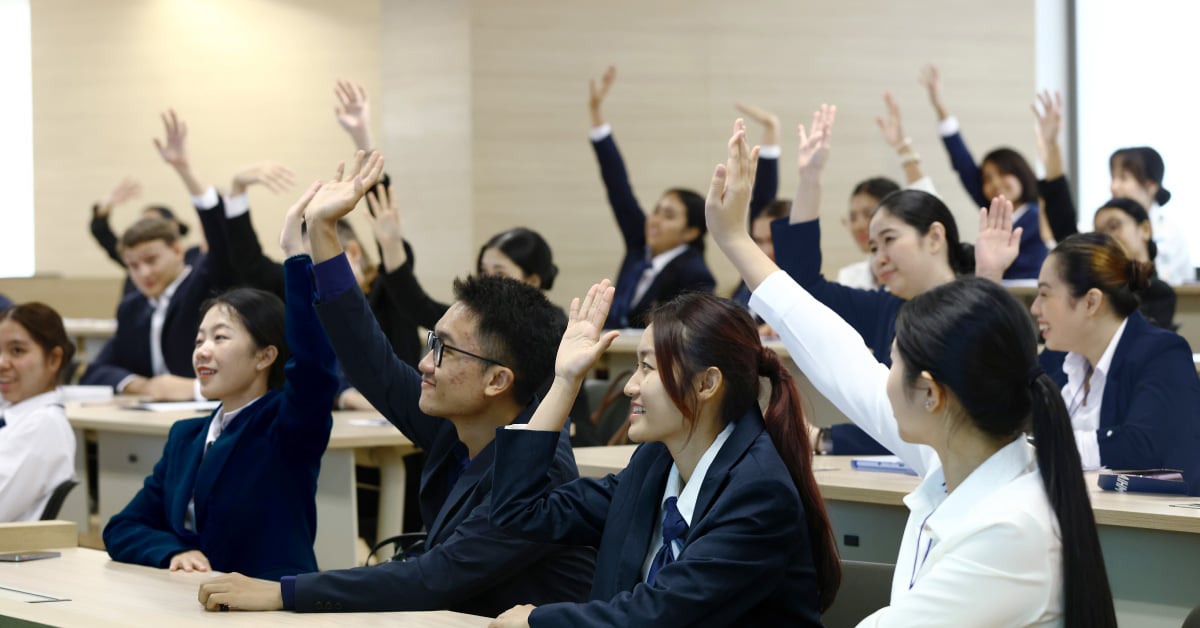Active Learning Activities for Higher Education

Back in the Middle Ages, a book was a rare, priceless object. The art of bookmaking required a team of highly skilled scribes, illuminators and binders. Each book cost a small fortune. Only the wealthiest members of society were able to own books, and even then, the number of books you were able to own or gain access to was limited by practical considerations. As of September 2023, the internet contains 4.3 billion pages of content, accessible to virtually everyone. Those Medieval Europeans would consider today’s wide-sweeping access to knowledge an embarrassment of riches. But knowledge does not equal understanding.
With each passing decade, we learn even more about how people learn. Until very recently, the standard mode of teaching in higher education was the ‘lecture’, a word that incidentally comes into the English language from French, where its original meaning is ‘reading’. During a lecture, a professor—or ‘lecturer’—stands at the front of the lecture hall and reads from their notes to deliver an extended sermon on a subject. In a world where the biggest barrier to learning was access to information, this teaching format is a logical solution. In a world, like today’s, marked by information overload, the lecture is in many ways an outdated antique.
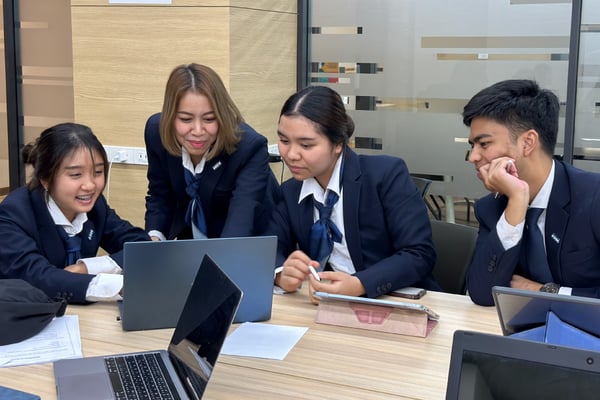
Students today can easily find information on any topic. Current university students have never known a world without internet. My own teenage daughter, like many young adults, was skilled at surfing the net to find the videos and content she wanted before she even knew how to read. Our job as educators therefore is not to merely provide information to students but to help them evaluate it, think about it critically, engage with it using higher order thinking skills and apply it to the benefit of their own aims.
Photo credit: https://www.linkedin.com/in/michael-w-wiederman-1bb3992/
Today’s educators also thankfully can take advantage of the continually evolving research in learning that emerges in fields ranging from pedagogy to psychology to the cognitive sciences. As psychologist and educator Dr. Michael Wiederman has said, “Learning is not a spectator sport.” To truly learn, we must engage with material actively and meaningfully. Effective learning is a process of exploration, discovery and personal engagement with a topic in a way that has specific meaning and relevance to the individual learner.
We now know from countless studies that students learn best when they take an active role in the learning process. The primary role of an educator has shifted to becoming a facilitator of this learning process. Teachers design the learning experience and guide their students through it. Of course, this paradigm shift from passive to active learning requires a new skillset from educators. The revolution in pedagogy is well underway. Everyone is familiar with the notion of a student-centred classroom. Transforming our teaching practices though is another matter.

In this article, I’ll explore the skills, strategies and tactics educators can use to give their students ownership of the learning journey. We’ll dive into the features of active learning and a variety of ways to leverage active learning tactics in the classroom.
What Is Active Learning?
Active learning is a pedagogical approach that offers a powerful alternative to the traditional learning methods in which students are merely passive recipients of knowledge. It’s a student-centred approach that shifts the focus from the teacher as the primary source of knowledge to the student as an active participant in their own learning journey.

Instead of merely listening to an instructor, students build a deeper understanding of and connection to the material through activities such discussion, debates, problem-solving exercises, role-playing activities, practical labs, field trips, service learning and leveraging technology. In an active learning scenario, the focus is often on developing competencies as opposed to merely acquiring knowledge. Active learning involves a wide variety of activities and strategies, all of which share a focus on involving the learner in the learning process.
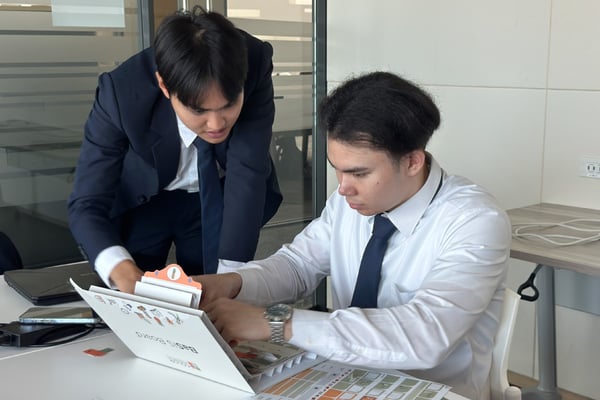
Instructors facilitate the learning journey by asking questions and guiding students to think critically about a topic in order to develop their own understanding. The goal isn’t to arrive at a single “correct” answer to a question but to reflect and build their own solution, drawing on their own lives and experiences and the various insights of their peers. Lessons learned are more enduring and more relevant to the individual. Importantly, the conclusions learners arrive at are more likely to be innovative and forward-thinking, pushing the boundaries of knowledge rather than reinforcing them. Instead of repeating a piece of knowledge delivered by the instructor, the student builds their own knowledge, frequently by drawing on connections between the topic and their own day-to-day life.
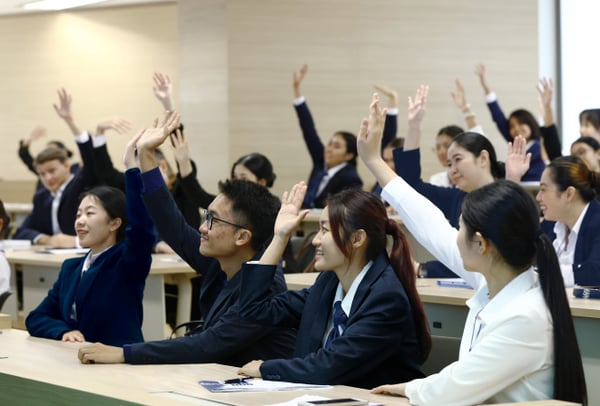
Key Features of Active Learning
As mentioned above, the methods available to teachers designing active learning scenarios are incredibly diverse. That said, active learning scenarios tend to share a combination of the six following features:
- Student Engagement
Active learning demands that students actively participate in the learning process, promoting a higher level of engagement and enthusiasm for the subject matter.
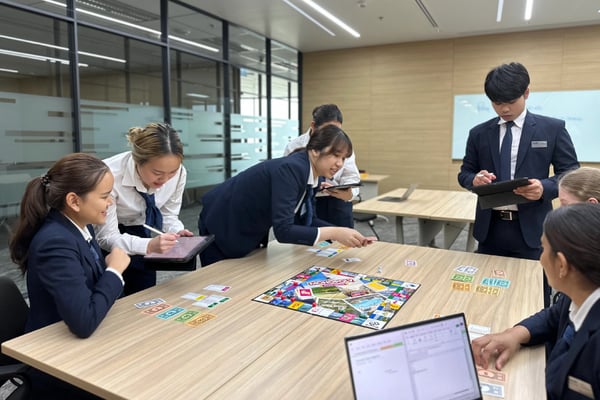
- Critical Thinking
Active learning fosters critical thinking skills by encouraging students to analyse, evaluate and synthesise information rather than passively absorbing it. An active learning approach emphasises ways to work with information, as opposed to only passively acquiring or memorizing information as presented.
- Problem-Solving
Active learning often involves real-world or strategically invented problem-solving scenarios, helping students apply theoretical knowledge to practical situations.
- Collaboration
Active learning promotes collaboration and teamwork, as many active learning activities involve group work or peer-to-peer interaction. The classroom learning dynamic is decentralized, transferring ownership of the learning process to students themselves.
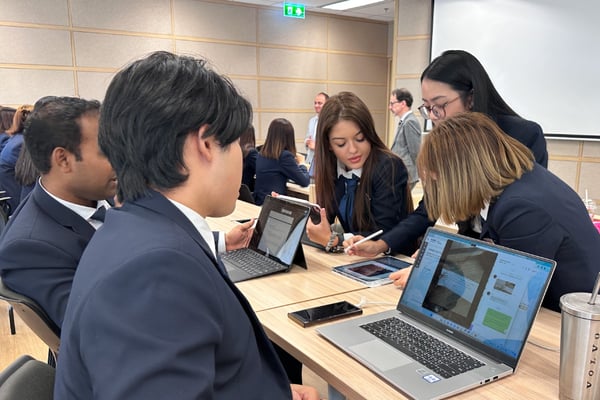
- Immediate Feedback
Students receive immediate feedback, either from their peers, instructors, or through self-assessment, which aids in the learning process. Learners get instantaneous feedback while they are actively engaging with the material, instead of only at a later date which could be days after they’ve turned in an assignment and they’ve mentally moved on to other matters.
- Retention and Application
Compared to passive learning, active learning methods increase knowledge retention. Students remember what they learn and are better able to apply their knowledge in real-world contexts.
How to Incorporate Active Learning into Your Teaching
When incorporating active learning into your classes, you may encounter some initial resistance from students. Active learning can be less straightforward than passive learning and may require students to step out of their comfort zones to participate in socially interactive activities. Not only this, but active learning requires instructors to branch out from their comfort zone as well, implementing new techniques and redesigning their instructional methods.

Here are some strategies to help ease the transition and promote active learning:
- Create a Safe Environment
Ensure your classroom is a safe space where students feel comfortable speaking their minds. Emphasise the importance of making an effort and viewing mistakes as learning opportunities that are natural, and even desirable, parts of the learning process. In the active learning classroom, creating a sense of community and mutual respects for fellow learners is of the utmost importance.
- Encourage Ownership
Motivate students to take ownership of their learning by tracking their progress, and documenting outcomes, for example, by compiling portfolios. Low-stakes reflection papers are another great way to put students at the centre of their own learning and allow them to recognise the progress they’re making – as well as areas for growth they’d like to explore. When students complete large projects or a unit of study, you might ask them to write a short reflection on the experience of the project, what they’ve learned or how they might further explore or build upon this progress.
- Leverage Asynchronous Learning
Utilise asynchronous learning opportunities before class for foundational knowledge acquisition. This might include reading assignments, watching instructional videos or conducting independent research around the topic in question. Freeing the classroom from lecture time aimed at delivering information will allow more time for the activities and discussion that build on information, explore it more deeply and turn it into true knowledge and skills.
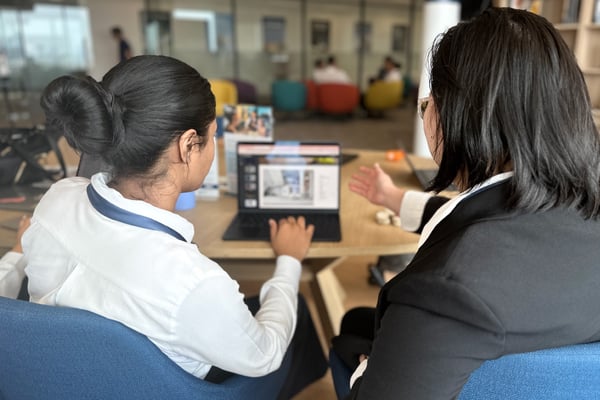
- Interactive Concept Checks
Use interactive concept-checking exercises such as quizzes to gauge student understanding asynchronously or at the beginning of class. This can be fun and inject a spirit of competition into the classroom. A bonus: these kinds of low-stakes mini quizzes serve as a gentle push for students to complete the asynchronous learning, such as background reading, they may be expected to do before coming to class.
- Group Work and Collaborative Learning
Design activities that involve group work and collaborative learning. These exercises might be as short as a quick five-minute task or as substantial as an entire semester-long course that takes the form of a group project.

- Simulations and Site Visits
Incorporate simulations that demonstrate cause and effect, allowing students to explore learning through trial and error. These might take the form of role-playing activities or thought experiments. Just as a vehicle driving simulator allows new drivers to learn in a safe environment free of real-world consequences, similarly hypothetical scenarios allow students to learn and take risks in ways that might not be possible or advisable in a real-world environment. Simulations can also serve as a “trial run” before immersing students in real working environments through service learning, site visits or internships.
- Debates and Perspective-Sharing
Learning emerges at points of friction when our current understanding is challenged by new information or the perspective of others. Organise debates and encourage students to express their viewpoints to explore new perspectives and foster a holistic understanding of complex issues.
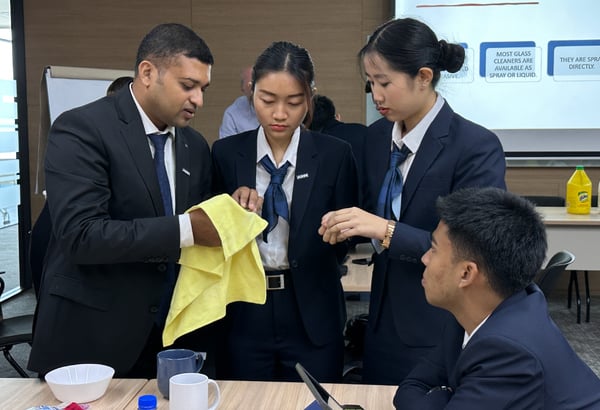
By adopting these strategies, you can increase student motivation and engagement, ultimately leading to improved academic performance. As you open the door to active learning and encourage students to think outside the box, you will find that they have valuable insights to share and that the learning experience becomes a dynamic exchange of ideas and knowledge.
Finding Your Active Learning Teaching Style
At AIHM, we’re big believers in active learning, championing it as a central pillar of our teaching philosophy. To keep students engaged, we’ve instituted a 15-minute rule, reminding us to maximise active learning opportunities by not speaking to the class for more than 15 minutes at a time. By minimising lecture-style teaching and ensuring continuous student input and activity, we’ve seen our students take ownership of their own learning and become active participants in their own growth, connecting subjects to their own aspirations.
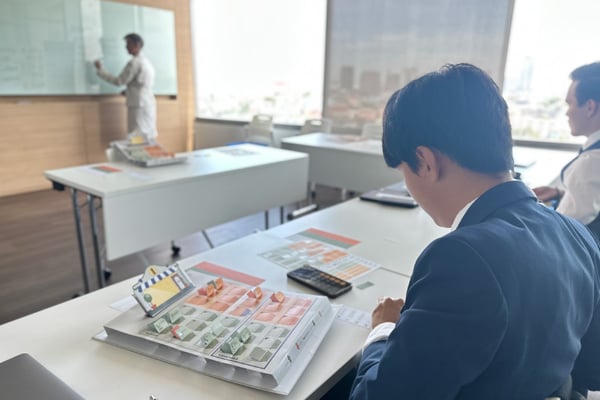
Just as your students learn by doing in an active learning classroom, instructors can learn by a similar method. Explore and have fun with your teaching methods, and your students will as well. Over time, as you’re actively trying different learning experiences, you’ll learn which approaches work best for your students, your subject matter and your own teaching strengths. Keeping in mind the principles and strategies above, you can begin to develop your own active learning teaching style. Enjoy the journey as you take your teaching into exciting terrain, exploring new ways to centre students in the learning process and guide them to success.
Learn About the Latest in Hospitality Education
AIHM’s experts love sharing their passion for teaching and the insights they’ve gained over the course of their careers, including by teaching the hospitality leaders of tomorrow at AIHM in our Bachelor’s degree programme and professional development courses.
Follow us on LinkedIn and Facebook to learn from our newest posts or start a conversation about your own favourite active learning exercises. We’d love to hear from you!

